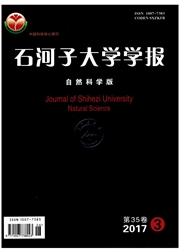

 中文摘要:
中文摘要:
基于挖方边坡应力重分布与应变局部化过程的数值模拟,将边坡开挖松弛过程划分为弹性松弛、塑性松弛产生、塑性松弛扩大和整体松弛失稳4个阶段;分析结果表明:正负分区揭示边坡开挖松弛的力学本质,可以用来确定开挖松弛区的范围,进而提出接近挖方坡面的开挖松驰区(负值区)、远离开挖坡面的原岩应力区(零值区)和介于两者之间的应力集聚区(正值区)的分区方案;并通过与相关方法的比较,表明该方法力学概念明确,计算方法简单,是挖方边坡设计中确定开挖松弛区的实用方法。
 英文摘要:
英文摘要:
According to numerical simulation of stress redistribution and strain localization during slope excavating,the excavation relaxation process is divided into four stages:such as elastic relaxation stage,plastic relaxation generating stage:plastic relaxation expanding stage and integral relaxation instability stage.Distribution of positive or negative zone for differential sigma one which is obtained by subtracting the stress tensors before and after excavated disclose mechanics characteristic of excavation relaxation zone,and can be used to confirm the range of relaxation zone.And then,excavation relaxation zone near excavation surface,original stress zone far from excavation surface and stress concentration zone between above two are partitioned.Finally,compared with relative methods,this partitioned scheme is proved to be usefull during stability analysis for cutting slopes because of its clear mechanics conception and simple calculation process.
 同期刊论文项目
同期刊论文项目
 同项目期刊论文
同项目期刊论文
 期刊信息
期刊信息
